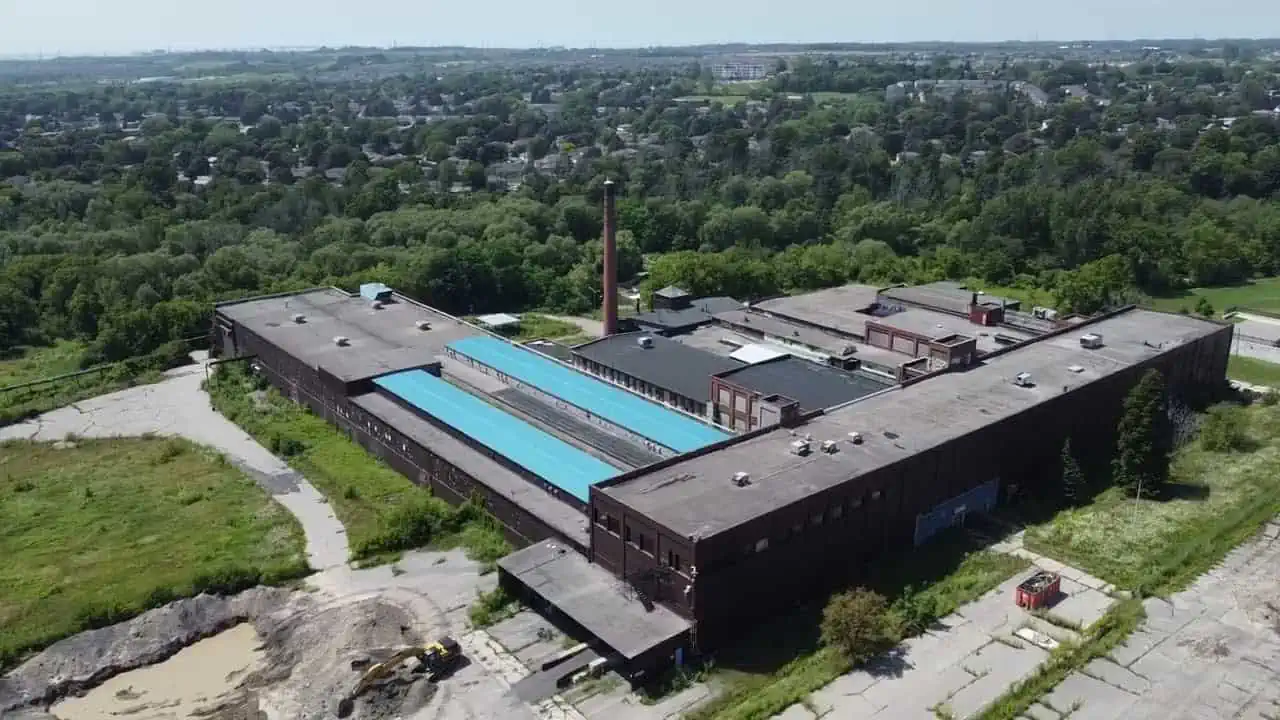Contaminated soil at former Goodyear plant has Bowmanville residents concerned
Published September 27, 2024 at 11:44 am

A long-term plan to turn the former Goodyear plant and the lands surrounding it into a community with more 10,000 residents is years away from any shovels hitting the ground but is already facing criticism from neighbours over what will be found when the 127-year-old building is finally demolished.
The original factory building was built in 1897, 13 years before Goodyear bought it and turned it into Bowmanville’s biggest industrial employer, with as many as 2,200 working at the plant during its peak in the Second World War.
A series of layoffs in subsequent years reduced the workforce to about 100 by the time the plant hit the century mark and slowdowns in the mining, coal and tar sands sector – the major markets for the conveyor belts made in Bowmanville at the time – contributed to the closure of the plant (now operated by ContiTech Continental) in 2016.
The business has been vacant (and subject to considerable vandalism and frequent arson) since then. The 36.8-acre site on Raynes Avenue was listed for sale in 2018 for $19.8 million. It was purchased by Karmina Developments the following year with plans in the books for a mixed-use proposal called Goodyear Village.
The planned community is part of Clarington’s Bowmanville East Urban Centre Secondary Plan, which also includes the Bowmanville Hospital – itself undergoing a major expansion – and the Bowmanville Mall.

Goodyear Village proposal
At least 30 per cent of the housing units that end up in the Bowmanville East plan area will be affordable housing and will include housing options for people of “all ages, incomes and abilities.” About 4,000 jobs are also expected to be generated with the development.
The plan was before Council Monday and there were several delegations expressing their concerns about the impact on the Bowmanville Creek and the local environment due to chemicals and other pollutants in the soil from the factory and increased traffic and noise in the area from the future development.
Bill Grainger, who works in environmental science and has been a resident of the area for two decades, had special concerns with the condition of the soil and hopes the municipality can appoint an independent body for comprehensive testing.
“I think all the neighbours should know what’s in that soil,” he said. “I don’t want to take our health for granted.”
Approval to demolish the structure was granted last year on the proviso that three structures, including the cement house (building 27), the powerhouse (building 1) and the chimney stack be preserved and designated under the Heritage Act.
Any decisions on the future of the former Goodyear plant and the rest of the Bowmanville East Urban Secondary Plan was referred to the November 18 Council meeting.
INdurham's Editorial Standards and Policies




